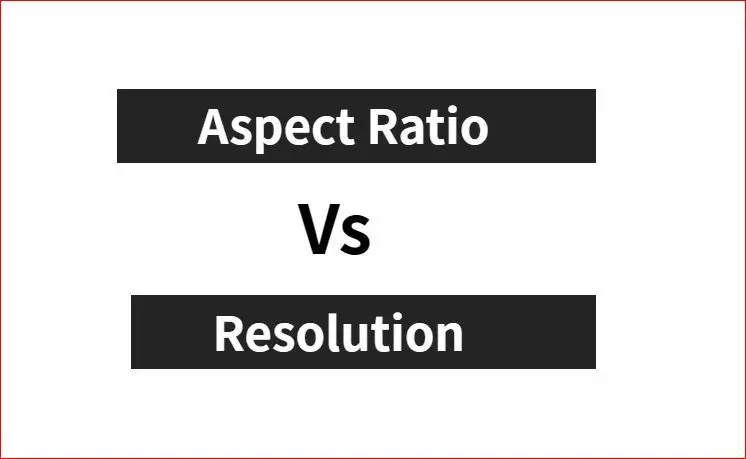Introduce screen resolution and aspect ratio
Screen resolution and aspect ratio are two important factors that determine the quality and viewing experience of a digital display. While related, they measure different attributes of a display.
Screen resolution refers to the number of pixels horizontally and vertically on a display. It is typically represented by two numbers separated by an x, like 1920×1080. The first number indicates the number of horizontal pixels and the second number indicates the number of vertical pixels. A higher resolution means there are more pixels, resulting in a sharper and more detailed image on the screen.
Aspect ratio refers to the proportional relationship between the width and height of an image or screen. It is represented by two numbers separated by a colon, like 16:9. The first number represents the width and the second number represents the height. Aspect ratio determines the shape and dimensions of the display.
Understanding both concepts is important when evaluating displays and ensuring an optimal viewing experience.
Sources:
[1] https://www.zdnet.com/paid-content/article/your-guide-to-screen-size-aspect-ratio-resolution-and-more/ [2] https://www.diffen.com/difference/Aspect_Ratio_vs_ResolutionPixels and resolution
Pixels are the tiny dots that make up a digital image on screens. Screens display images by lighting up tiny dots known as pixels in different colors and arrangements to form the picture. The higher the number of pixels, the more detailed the image can be. Screen resolution refers to the number of pixels horizontally and vertically on a display screen. It is usually represented as width x height, with the units in pixels. For example, a screen resolution of 1920 x 1080 means there are 1920 pixels across the width and 1080 pixels down the height. Therefore, the total number of pixels is 1920 x 1080 = 2,073,600 pixels. The more pixels there are in an image, the higher the resolution and level of detail (Source).
Common display resolutions
Some of the most common display resolutions include:
- 720p – This resolution has 720 horizontal lines of pixels and is usually formatted as 1280 x 720 pixels. 720p is considered high definition (HD).
- 1080p – This resolution has 1080 horizontal lines and is typically formatted as 1920 x 1080 pixels. 1080p is considered full high definition (FHD).
- 1440p – This higher resolution has 1440 horizontal lines and is commonly 2560 x 1440 pixels. 1440p is sometimes referred to as QHD or Quad HD.
- 4K – 4K resolutions are typically 3840 x 2160 pixels. 4K is also known as Ultra HD (UHD) and has over 4 times as many pixels as 720p.
Higher resolutions allow for greater pixel density and sharper, more detailed images on a display. 720p and 1080p are common for TVs, while 1440p and 4K are more common for computer monitors, allowing for crisper text and graphics.[1]
Measuring resolution
Screen resolution is measured by the total number of pixels that make up the display. Pixels are the tiny dots of color that comprise an image on a digital screen. The more pixels a display has, the sharper and more detailed the image will be.
Resolution is commonly measured in terms of the number of pixels displayed horizontally across the screen by the number of pixels vertically, referred to as the horizontal and vertical resolution. For example, a screen with a 1920 x 1080 resolution has 1920 pixels across the horizontal axis and 1080 pixels from top to bottom.
Some common display resolutions include:
- 1280 x 720 pixels (720p)
- 1920 x 1080 pixels (1080p)
- 2560 x 1440 pixels (2K)
- 3840 x 2160 pixels (4K)
The total number of pixels generally determines how clear and detailed an image can be displayed. More pixels allow for higher resolutions and sharper images. As Quizlet notes, “How is screen resolution measured? In Pixels.” The number of pixels determines the overall resolution.
(Source: https://quizlet.com/53451440/cis-105-exam-2-flash-cards/)
Aspect ratio basics
Aspect ratio refers to the ratio of width to height of a display or image. It is expressed as two numbers separated by a colon (Aspect ratio, Wikipedia). For example, an aspect ratio of 16:9 means the width is 16 units and the height is 9 units.
The aspect ratio is a mathematical formula used to frame images and video, as well as computer, television, and movie screens. By standardizing the aspect ratios, it allows for consistent image framing and display (What Is Aspect Ratio?, Wistia). The proportions and shape of the aspect ratio impact the perception and aesthetics of images.
Some common aspect ratios include:
- 4:3 – Traditional television sets
- 16:9 – High definition TVs and computer monitors
- 21:9 – Ultrawide computer monitors and theater screens
Choosing the aspect ratio depends on the application and personal preference. For example, 16:9 is well suited for landscape images and widescreen video, while 4:3 matches traditional print photos and retro gaming emulators.
Common aspect ratios
Some of the most common aspect ratios used in screens and visual media are 4:3, 16:9, and 21:9.
The 4:3 aspect ratio has been around for a long time and was the standard for early television screens. It is still commonly used for computer monitors, standard-definition televisions, and video cameras (Aspect ratio (image)).
The 16:9 aspect ratio emerged later as high-definition TVs became popular. It provides a widescreen cinematic view and is the most common aspect ratio for modern televisions and computer monitors (Understanding Common Aspect Ratios).
Ultrawide 21:9 monitors and TVs have become more popular in recent years. This extra wide aspect ratio is great for watching movies filmed in 2.39:1 cinematic widescreen and provides an immersive gaming experience.
Comparing resolution vs aspect ratio
Resolution and aspect ratio are related but distinct concepts when it comes to displays. Resolution refers to the number of pixels in a display, while aspect ratio refers to the proportional relationship between width and height.
A common misconception is that higher resolution always means a better aspect ratio. This is not the case. A display can have a high resolution but a poor aspect ratio, or vice versa. For example, a 1920×1080 display has a 16:9 aspect ratio. Doubling the resolution to 3840×2160 (4K) keeps the same 16:9 aspect ratio. The higher resolution provides more pixels and detail, but does not change the width-to-height ratio.
On the other hand, an ultrawide 2560×1080 display has a 21:9 aspect ratio, which is much wider than 16:9. However, it has lower resolution than a 3840×2160 4K display. So the ultrawide has a preferable aspect ratio for certain uses, but lower total resolution.
The optimal resolution and aspect ratio depends on the usage – watching movies, playing games, editing photos, etc. Higher resolution provides more space to work, but aspect ratio determines the shape and proportional area of the workspace. Finding a display that balances both well is ideal.
In summary, resolution and aspect ratio are separate specifications. Don’t assume higher resolution is always better. Consider both to find a display optimized for your particular needs.
Picking a display
When choosing a display, it’s important to consider both the resolution and aspect ratio. The resolution determines how sharp and detailed the image will be, while the aspect ratio affects the width and height of the display.
For general purpose displays like computer monitors, most modern monitors have a 16:9 aspect ratio, which is well suited for watching widescreen movies and videos. For productivity work requiring lots of vertical space like documents or web browsing, a 16:10 or 3:2 monitor provides more vertical real estate.
Gaming monitors aimed at competitive gamers often opt for a lower resolution but faster refresh rates, like 1080p at 240Hz. Meanwhile, visually rich games demand a higher resolution like 1440p or 4K. The aspect ratio for gaming is almost always 16:9.
When purchasing a display, think about your primary use case. For media enjoyment, a 16:9 4K monitor ensures you can watch ultra HD content. For office work and multitasking, a higher resolution 16:10 display gives you more usable desktop space. For gaming, balance resolution and refresh rate based on the game genres you play.
Letterboxing and pillarboxing
Letterboxing and pillarboxing refer to the black bars that are added to the top/bottom or sides of a video when there is a mismatch between the aspect ratio of the video and the display device. This happens because displays have a fixed width to height ratio, while video can have different aspect ratios.
For example, most movies are filmed in widescreen formats like 16:9 or 2.35:1. However, older TVs had a 4:3 aspect ratio. To fit a widescreen movie on a 4:3 TV, letterboxing is used, which adds black bars to the top and bottom to make the 16:9 video fit the screen dimensions. The black bars compensate for the difference in aspect ratios.
Pillarboxing works similarly but adds black bars on the left and right sides, like when displaying a 4:3 video on a 16:9 screen. The pillar bars make the video fill the screen width while maintaining the original 4:3 ratio.
While some see letterboxing and pillarboxing as a flaw, they are necessary to preserve the original framing and composition of a video when displayed on a mismatching screen. The black bars help avoid stretching or cropping the image. Overall, letterboxing and pillarboxing allow content to be viewed as intended by the creator.
Summary
In summary, the key differences between screen resolution and aspect ratio are:
- Resolution refers to the total number of pixels on a display, expressed as width x height (e.g. 1920 x 1080). It determines how sharp and detailed an image appears.
- Aspect ratio is the proportional relationship between the width and height of an image or screen. It is expressed as a ratio like 16:9 or 4:3.
- Resolution affects the overall detail and clarity of images, while aspect ratio affects the shape and dimensions of the display area.
- Standard resolutions have set widths and heights based on industry standards. Aspect ratios can be applied to many different resolutions.
- Resolution is an objective quantitative measurement. Aspect ratio is more of an abstract geometric concept.
- Higher resolutions allow more pixels and detail. Wider aspect ratios create a more panoramic viewing experience.
Understanding the key distinctions between resolution and aspect ratio allows you to choose a display best suited to your needs and media consumption.





